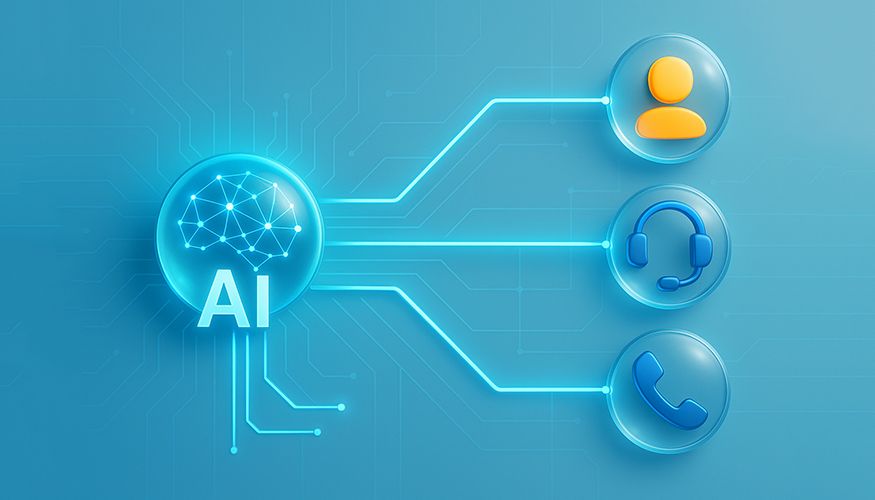Table of Contents
- Why automate customer support now?
- What is automated customer service?
- Benefits (that leadership cares about)
- The building blocks of customer support automation
- Where automation fits across channels
- A simple, high-impact starting list
- How to automate customer support (step-by-step)
- Tool selection criteria (what “best” looks like)
- Sample automation ideas by channel (quick reference)
- Contact center & call center automation
- Implementation checklist (copy/paste)
- Frequently asked questions
- Final thoughts
Try Whippy for Your Team
Experience how fast, automated communication drives growth.
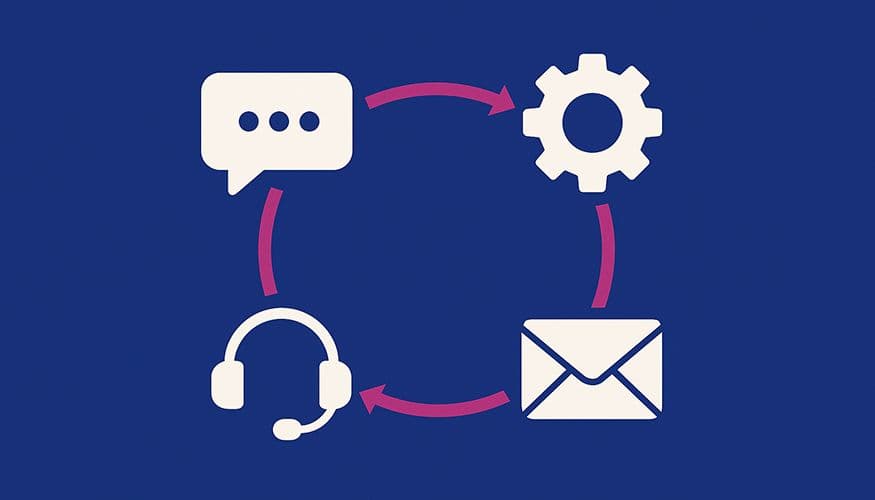
Automating customer support means using AI customer support tools—such as AI agents, chatbots, virtual assistants, voice bots, and knowledge bases—to handle customer questions and requests without always involving a human. These tools work together with workflow automation to provide instant answers across every channel, 24/7.
When an issue is too complex, it’s automatically routed to the right person. Done correctly, customer support automation reduces costs, speeds up first response times, boosts CSAT scores, and enables your team to serve more customers without increasing headcount.
Why automate customer support now?
Today’s customers expect 24/7 availability and quick, accurate answers across live chat, SMS, email, and phone. Meeting these demands with staffing alone can make costs soar and cause quality to drop when volume spikes.
Automation changes that. With modern AI customer service tools, including some of the best AI tools for customer service, you can handle repetitive requests from start to finish. You can also give real-time guidance to agents when a human touch is needed. Smart ticket routing sends complex cases to the right specialist the first time.
What’s new today is the technology. Advances in NLP (Natural Language Processing), generative AI, conversational AI, and advanced AI capabilities now make it possible to give context-aware responses based on account status, order history, and company policy. This means resolutions can feel personal instead of robotic.
Sentiment analysis—often powered by dedicated sentiment analysis tools—lets you detect frustration, urgency, or confusion in real time. Once spotted, you can adjust the conversation, escalate to a human, or trigger a workflow automatically. This approach improves CSAT while keeping empathy in every interaction.
Automation also boosts self-service automation. A strong knowledge base paired with retrieval for LLMs lets customers solve common problems instantly. Meanwhile, AI agents or bots can handle refunds, reships, or appointment changes by talking directly to your back-office systems. This reduces first response time, shortens average handle time, and increases the deflection rate as more issues are solved before they become tickets.
On the phone side, IVR automation and voice bots can authenticate callers, check status, and offer callbacks or intelligent transfers. This smooths peak times without adding extra staff.
Finally, leadership wants proof. Automation delivers consistent decision-making and built-in measurement. Every bot turn, every ticketing automation rule, and every ticket routing decision is logged. This visibility helps operations and finance teams trust the program, see how you reduce support costs, and plan where to invest next in the best tools to automate customer support for your organization.
📌 Looking for voice-specific guidance? See our deep dive: Best Voice Bot for Customer Support: 24/7 AI Service ⪢
You’ll learn:
- What automated customer service is (and isn’t) – When a chatbot or virtual assistant should resolve an issue entirely, when an AI copilot should assist a human, and how self-service automation and sentiment analysis work together to improve outcomes.
- Core building blocks – The essentials: AI agents, AI copilot, knowledge base, IVR automation, ticketing automation, and supporting technology like analytics and quality review.
- How to automate customer support (step-by-step) – A practical blueprint for mapping intents, building flows, connecting systems, and measuring results across web chat, SMS, email, and voice. This also serves as a hands-on guide for anyone wondering how to automate customer service in a way that’s efficient and scalable.
- Metrics that prove ROI – How to track first response time, average handle time, and deflection rate, and use feedback data to guide improvements.
- Best places to start – High-impact use cases, from order status to password resets, plus tips for Shopify customer support automation and enterprise contact centers.
What is automated customer service?
Automated customer service (also called automated customer support) uses AI tools, virtual assistants, and workflow automation to handle repetitive or routine requests from start to finish. When a case is more complex or sensitive, it’s sent to a customer service agent for human judgment.
Unlike older systems that followed fixed scripts, modern automation combines AI agents for customer service, automated response systems, and seamless integrations with CRMs, order management tools, and ticketing platforms. This lets support workflows run across all omnichannel customer service channels—web chat, live chat, SMS, email, voice/phone, and WhatsApp. Customers get 24/7 customer support without long hold times, while the customer support team can focus on the issues that truly need them.
At its core, automated customer service improves efficiency for both customers and the business. It can instantly handle tasks like password resets, order lookups, subscription changes, and return authorizations. This cuts delays, reduces wait times, and delivers a personalized experience that improves the overall customer experience.
Core capabilities include:
- AI chatbot for customer service with advanced intent detection and adaptive chatbot flows that guide the conversation.
- AI agents for customer service that can access back-office data and complete actions—like issuing refunds or updating account details—through seamless integrations.
- Self-service automation via a knowledge base for customer service, enabling customers to solve their own issues at any hour.
- Automated notifications, status updates, and proactive outreach to keep customers informed and engaged.
- Ticketing system enhancements, including an automated ticketing system, ticketing automation, and intelligent routing that sends complex cases to the right expert.
- Agent assist / AI copilot tools that provide real-time guidance, suggest replies, and offer translation automation so agents can help customers in any language.
- Voice automation with IVR automation and a voice bot for customer support to handle common phone queries and free up live agents for high-value conversations.
Benefits (that leadership cares about)
When done right, customer support automation delivers measurable, strategic value—not just operational convenience.
1. Reduce support costs through deflection and faster resolution of repetitive inquiries. Automated workflows handle thousands of common issues without manual input from a customer service agent, lowering cost-per-ticket and freeing staff for complex cases.
2. Improve CSAT with automation by delivering instant, personalized interactions that feel relevant and helpful, plus smoother handoffs to humans when needed—driving stronger customer engagement across every channel.
3. 24/7 availability without hiring overnight shifts—automation works around the clock.
4. Scalability that absorbs volume surges during seasonality, product launches, or promotions without harming service quality.
5. Customer insights gathered from feedback analysis, sentiment analysis, and interaction journey data help continuously refine support strategy.
6. Consistent quality across every channel thanks to context-aware responses and a well-maintained knowledge base that fuels both bots and humans.
Track these three first:
- First response time (FRT): How quickly a customer gets an initial reply.
- Average handle time (AHT): How long it takes to resolve a ticket from start to finish.
- Deflection rate: The percentage of resolutions handled by self-service automation or bots that never require agent intervention.
The building blocks of customer support automation
1) Knowledge base + LLM retrieval
A well-structured knowledge base for customer service is the foundation of self-service automation. It supports both customer-facing help centers and agent-facing search tools.
When paired with generative AI retrieval, it can deliver precise, up-to-date answers, follow compliance rules, and maintain your brand’s tone automatically. This means faster, more consistent responses—whether they come from an AI chatbot, a virtual assistant, or a human agent.
2) Conversational AI (chat + messaging)
Conversational AI powers automation in web chat, in-app messaging, and social channels.
Chatbots and virtual assistants use intent detection, personalization engines, and context-aware responses to guide customers through solutions in fewer steps.
Integrated with CRMs, order systems, and payment platforms, they can take real actions—not just answer questions.
3) Voice automation
Many customers still prefer phone support. Voice automation, including IVR automation and voice bots, can authenticate callers, check order status, schedule callbacks, and complete simple transactions without a human.
When the issue is more complex, intelligent routing sends the call to the most qualified customer service agent. This reduces wait times and improves efficiency for your customer support team.
4) Ticketing automation
Modern support needs smarter ticket handling. Ticketing automation uses AI to categorize requests, merge duplicates, set priorities, and trigger ticket routing rules based on complexity, sentiment, or customer tier.
An automated ticketing system reduces repetitive work, speeds up resolutions, and ensures no case is missed—even during high-volume spikes.
5) Agent assist / AI copilot
AI-powered assistance boosts even the strongest teams. Agent assist or AI copilot tools provide real-time guidance, suggest pre-approved replies, and enable translation automation for multilingual service.
This keeps every customer service agent working at peak efficiency, delivering a personalized experience faster and with fewer mistakes.
6) Proactive + reactive
Support doesn’t have to wait for customers to reach out. Proactive customer support uses automated notifications to send order updates, outage alerts, renewal reminders, and satisfaction surveys before issues grow.
Paired with feedback, experience analysis, and sentiment analysis tools, automation can detect problems early. It can then adjust the automated journey or trigger a human follow-up.
This approach improves retention, strengthens customer experience, and shows customers you value responsiveness.
Where automation fits across channels
Automation can be applied to every customer communication channel. When used strategically, it keeps experiences consistent, efficient, and personalized. The right mix of AI-powered chatbots, workflow automation, and customer service automation software creates a smooth handoff between self-service and live agents. This saves time, allows higher support volumes, and ensures human help is still available when needed.
Web & Live Chat
On your website or app, AI-powered chatbots can handle FAQs, order tracking, billing questions, returns, and account updates. Using predictive analytics and intent detection, they anticipate needs, suggest next steps, and pass conversations to a live agent when needed. They create personalized experiences by using customer history, preferences, and past interactions.
SMS & Messaging
SMS, WhatsApp, and social DMs work well for quick verifications, reminders, status updates, and proactive messages like “your order has shipped.” Automated replies confirm actions instantly and can offer an option to speak to a customer service agent. With workflow automation, these channels can also trigger surveys or link to knowledge base articles for extra help.
Email is still an important channel for detailed or complex issues. Customer service automation software can sort and route messages using ticketing automation. Integrating your ticketing system with your CRM ensures replies include relevant customer data. Workflow automation can also add helpful knowledge base content directly to emails, saving time and keeping answers consistent.
Voice / Phone
Many customers still prefer phone support. Voice automation and voice bots can collect customer details, verify identity, and give status updates before sending calls to an agent. A voice bot for customer support can resolve common requests like balance checks or appointment confirmations. Intelligent routing sends complex calls to the right live agent, cutting wait times and improving efficiency.
Help Center
A strong help center with self-service automation offers guides, videos, and step-by-step troubleshooting. With predictive analytics, the system can suggest content before a customer starts searching, which shortens wait times and improves the customer experience.
A simple, high-impact starting list
For companies just beginning to automate repetitive tasks, start with high-volume, low-complexity inquiries that deliver quick ROI:
Order status checks, cancellations, returns, and refunds
Password resets and account updates
Subscription changes, plan comparisons, and renewals
App or product troubleshooting steps
Billing queries, invoice reissues, and tax receipt requests
Appointment booking and rescheduling (powered by AI agents)
Shipping delays, damage claims, and re-shipments
Product recommendations and sizing guidance
Warranty submissions and RMA creation
These use cases free your customer support team from repetitive tickets, letting them focus on higher-value managing customer relationships and resolving edge cases.
How to automate customer support (step-by-step)
Step 1: Map intents and pick quick wins
Export your top customer inquiries by volume and complexity. Group them into FAQs, transactional flows, and escalated workflows. Prioritize high-volume + high-effort cases where automation will deliver immediate time savings and measurable improvements in customer experience.
Step 2: Prepare content and policies
Your automation is only as good as your knowledge base. Strengthen it with canonical answers, documented workflows, and edge case handling. Include multimedia like screenshots or GIFs. Define escalation policies so AI-powered chatbots and virtual assistants know when to hand off to live agents.
Step 3: Design chatbot flows (with guardrails)
Map out conversational paths for each intent: greeting → intent detection (NLP) → data validation → action → confirmation → feedback request. Build in automated response systems for straightforward resolutions and clear handoff triggers for more complex needs.
Step 4: Wire up systems
Integrate your CRM, e-commerce, shipping, and payment platforms so AI agents can take direct action—refunds, cancellations, reschedules—without human intervention. Use workflow automation to log activities, trigger follow-ups, and sync updates across all tools.
Step 5: Add voice + IVR automation
Implement voice bots to handle high-volume call types. For example, a voice bot for customer support can answer shipping inquiries, confirm appointment details, or give account balances without engaging a human. Keep live agents available for escalations, with intelligent routing to cut phone call delays.
Step 6: Empower humans with AI copilot
Deploy agent assist or AI copilot tools to provide real-time guidance, policy snippets, and translation automation during live interactions. This ensures every customer service agent has the same high-quality resources and can maintain a personalized experience while saving time.
Step 7: Measure, learn, iterate
Track key metrics—first response time, average handle time, deflection rate, and CSAT. Use feedback analysis, predictive analytics, and sentiment analysis to refine chatbot flows, knowledge base content, and escalation logic. Continually test and improve based on what’s working and where drop-offs occur.
Tool selection criteria (what “best” looks like)
When selecting customer support automation tools or other customer service automation software, you want solutions that not only work today but can evolve with your needs:
- Advanced AI: Robust NLP, generative AI, predictive analytics, and intent detection for accurate automation.
- Omnichannel support: Consistency across chat, SMS, email, phone calls, and social messaging.
- Actionable AI agents: Ability to take meaningful actions, not just answer questions.
- Agent assist depth: Comprehensive real-time guidance tools, macros, and compliance checks to help live agents excel.
- Analytics: Built-in feedback and experience analysis tools, sentiment analysis tools, and journey tracking for managing customer satisfaction.
- Governance: Secure permissions, audit logs, redaction, and human-in-the-loop approvals.
- Time-to-value: Quick deployment, ready-made templates, and a no-code builder so your customer support team can launch without heavy IT reliance.
Sample automation ideas by channel (quick reference)
Automation should be applied where it delivers the most value, reduces operating costs, and improves customer experience without sacrificing quality. The table below summarizes the most effective automations for each channel and the key metrics service teams should track to measure success.
Channel | Ideal Automations | Metrics to Watch |
|---|---|---|
Live chat / web | FAQs, orders, billing, appointments, troubleshooting via AI-powered chatbots with Natural Language Processing (NLP) and customer self-service | First Response Time (FRT), Containment, CSAT |
SMS / messaging | Status updates, proactive nudges, verifications, reminders, transactional alerts, and personalized offers | Deflection Rate, Opt-outs |
Auto-triage, macro inserts, FAQ links, workflow automation, and ticket enrichment from CRM data | Average Handle Time (AHT), Backlog, SLA Hit Rate | |
Voice / IVR | Status checks, callback offers, secure verification, intelligent routing, and voice bot for customer support to handle common requests | Containment, Transfer Rates |
Help center | Guided how-tos, interactive flows, search improvements, self-service automation for faster resolving issues | Self-serve Success Rate, Bounce Rate |
Expanded breakdown by channel
💬 Live chat / web
On-site chat is often where a customer interacts first, especially for products or services with high buying consideration. AI-powered chatbots with Natural Language Processing (NLP) can answer FAQs, update billing, schedule appointments, or walk through troubleshooting steps in real time. This not only delivers improved customer satisfaction, but also helps service teams handle surges without overloading live agents. The goal here is to provide customer self-service that’s quick, accurate, and available 24/7, which reduces FRT and boosts containment rates.
📱 SMS / messaging
SMS, WhatsApp, and social messaging apps are perfect for fast, transactional communications—order confirmations, proactive delivery updates, payment reminders, and account verifications. These automations keep customers informed without requiring them to pick up the phone, and workflow automation can trigger follow-up surveys or knowledge base links. Tracking deflection rate and opt-out rates ensures the balance between automation and customer preference is maintained.
Despite newer channels, email remains critical for customers who need to provide detailed context. Here, customer service automation software can classify incoming messages, auto-respond with relevant links, and enrich tickets with customer data before they hit a customer service agent’s queue. Workflow automation helps route cases to the right team instantly, saving time and reducing operating costs while ensuring no email gets lost in the shuffle.
📞 Voice / IVR
Some customers still prefer phone calls. With voice automation and voice bots, contact centers can provide status checks, process secure verifications, or offer callbacks without a human on the line. A voice bot for customer support can resolve repetitive requests entirely, while intelligent routing ensures more complex calls go directly to the most qualified live agent. This approach improves containment, reduces transfers, and keeps service teams focused on high-value conversations.
📚 Help center
Your help center is the foundation of customer self-service. Offering guided how-to content, interactive troubleshooting flows, and AI-powered search ensures customers can solve problems independently at any time. Self-service automation here not only lowers operating costs but also boosts improved customer satisfaction by empowering users to resolve their own issues without waiting for an agent. Metrics like self-serve success rate and bounce rate show whether your content and navigation are effective.
Contact center & call center automation
In large-scale environments, contact center automation is essential for maintaining quality without overwhelming the service teams. By streamlining queues, assigning the right skills to the right inquiries, and applying intelligent routing, automation ensures that customers interact with the most capable resource from the start.
Call center automation takes it further for phone-based support. IVR automation can handle identification, secure verification, and routing, while ticketing automation opens, classifies, and enriches cases before they ever reach a customer service agent. When you pair this with agent assist, live agents receive contextual insights and real-time guidance, allowing them to focus on high-value tasks like upselling, cross-selling, and resolving issues that require emotional intelligence.
The result? Lower operating costs, faster resolving issues end-to-end, and consistently improved customer satisfaction across all channels.
📌 Ready to see how AI can transform your call center operations? Explore our AI Call Center Solutions guide for strategies, tools, and real-world examples that deliver measurable results ⪢
Implementation checklist (copy/paste)
❒ Top intents prioritized with volumes and effort to target the biggest impact.
❒ Canonical answers documented in the knowledge base for consistent replies.
❒ Chatbot flows built with clear fallback and escalation rules to protect user experiences.
❒ System integrations in place so AI agents can take meaningful actions without manual work.
❒ Voice automation and visual IVR deployed for faster call handling.
❒ AI copilot enabled for agents to deliver personalized experiences with less effort.
❒ Metrics wired: FRT, AHT, deflection, CSAT to measure success.
❒ Feedback analysis + sentiment analysis loop running for continuous improvement.
❒ Quarterly review of new intents and seasonal patterns to keep automation relevant.
Frequently asked questions
Q: What is automated customer service?
A: Automated customer service uses AI customer service tools and workflow automation across channels—chat, SMS, email, and voice—to handle routine issues automatically. Complex cases are sent to live agents. This improves speed, reduces operating costs, and increases customer satisfaction by giving customers instant help when they need it.
Q: How to automate customer support with AI?
A: Begin with high-volume requests and a strong knowledge base. Create chatbot flows with intent detection using Natural Language Processing (NLP). Connect your systems so AI agents can take actions like refunds, reships, or account updates. Add IVR automation for phone calls and give live agents AI copilot tools. Track metrics like first response time (FRT), average handle time (AHT), and deflection rate, then improve flows based on feedback.
Q: Will automation replace human agents?
A: No—automation is meant to handle repetitive tasks, so live agents can focus on complex, empathetic interactions. The best results come from combining AI-powered chatbots and self-service with skilled human oversight.
Q: Which metrics matter most?
A: First response time, average handle time, deflection rate, CSAT, and resolution quality. Add QA reviews powered by feedback and experience analysis tools to ensure quality stays high.
Q: What about data quality and safety?
A: Use role-based access controls, redaction, audit logging, and human-in-the-loop reviews. Keep your knowledge base and automation scripts current—outdated content is the fastest way to erode trust and satisfaction.
Final thoughts
If you’re wondering “how to automate customer service” or “how to automate customer support”, start where customer interacts most frequently and where volume meets friction. Layer workflow automation into each channel over time—web chat, SMS, email, and voice—always keeping live agents in the loop for high-stakes cases. Track and report on metrics that tie directly to improved customer satisfaction and reduced operating costs.
The goal isn’t just faster service—it’s a better customer experience for every interaction, whether handled by a bot, a self-service flow, or a human expert.
👉 See how AI customer service works across voice, SMS, and chat—book your Whippy demo today ⪢
Table of Contents
Table of Contents
- Why automate customer support now?
- What is automated customer service?
- Benefits (that leadership cares about)
- The building blocks of customer support automation
- Where automation fits across channels
- A simple, high-impact starting list
- How to automate customer support (step-by-step)
- Tool selection criteria (what “best” looks like)
- Sample automation ideas by channel (quick reference)
- Contact center & call center automation
- Implementation checklist (copy/paste)
- Frequently asked questions
- Final thoughts
Try Whippy for Your Team
Experience how fast, automated communication drives growth.
Related Articles
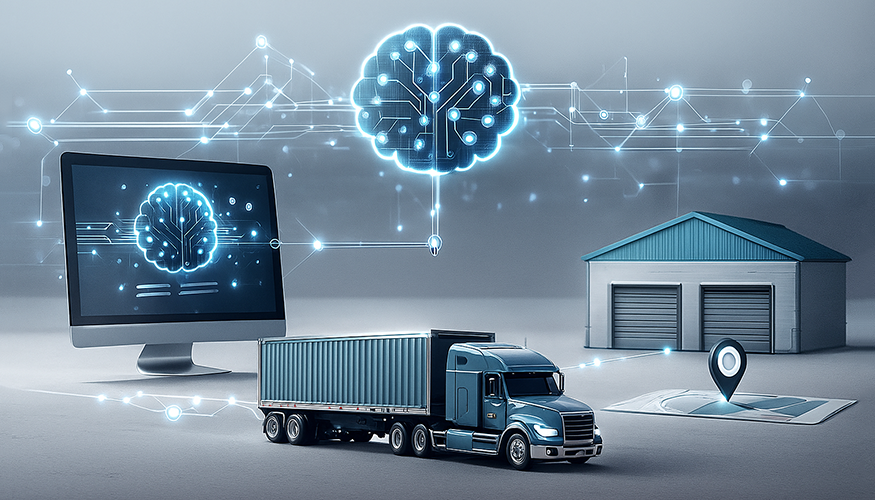
AI Automation for Logistics Companies: Faster CX

Best AI Sales Tools to Close More Deals
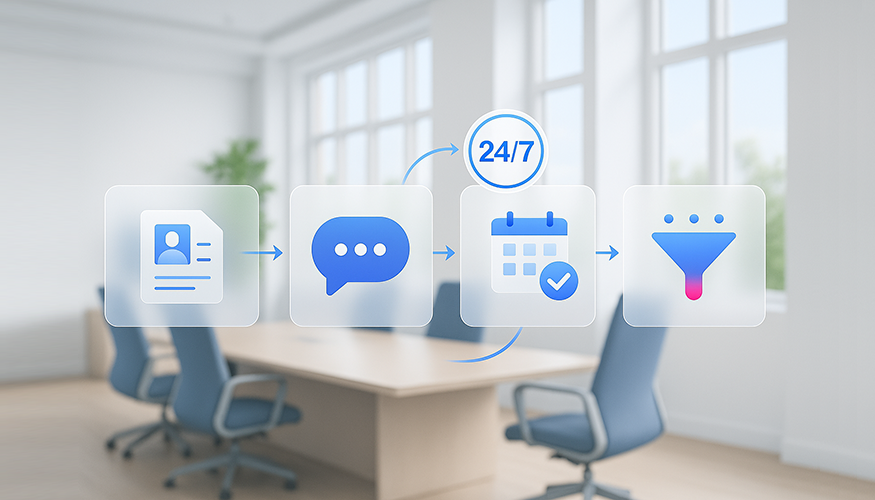
After Hours Recruiting: Convert Applicants 24/7
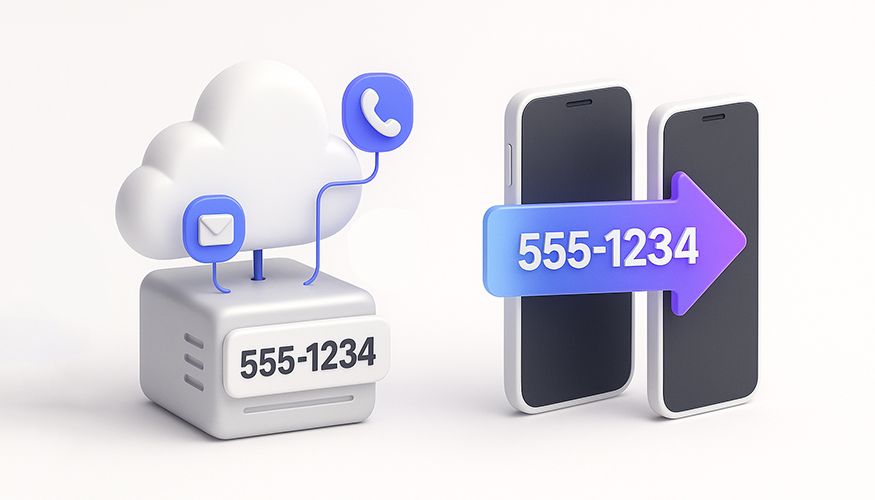
Phone Number Porting vs Hosting: Complete Business Guide
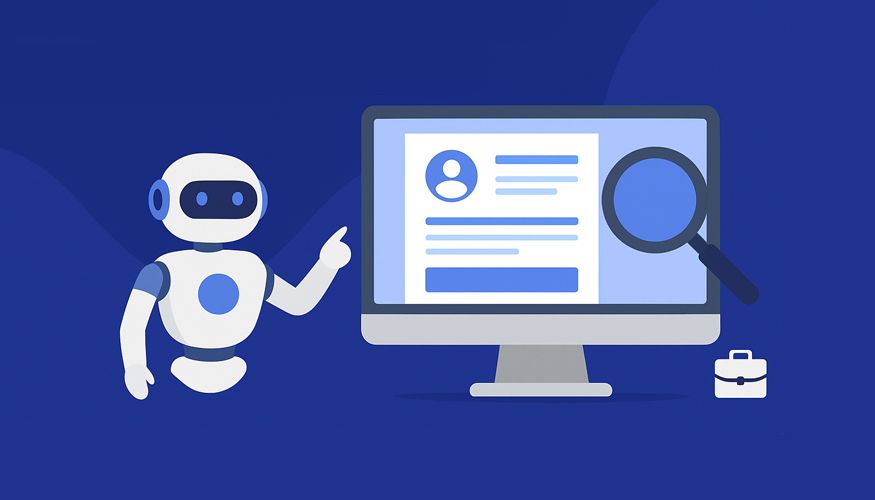
Best AI Resume Screening Software to Shortlist Faster
